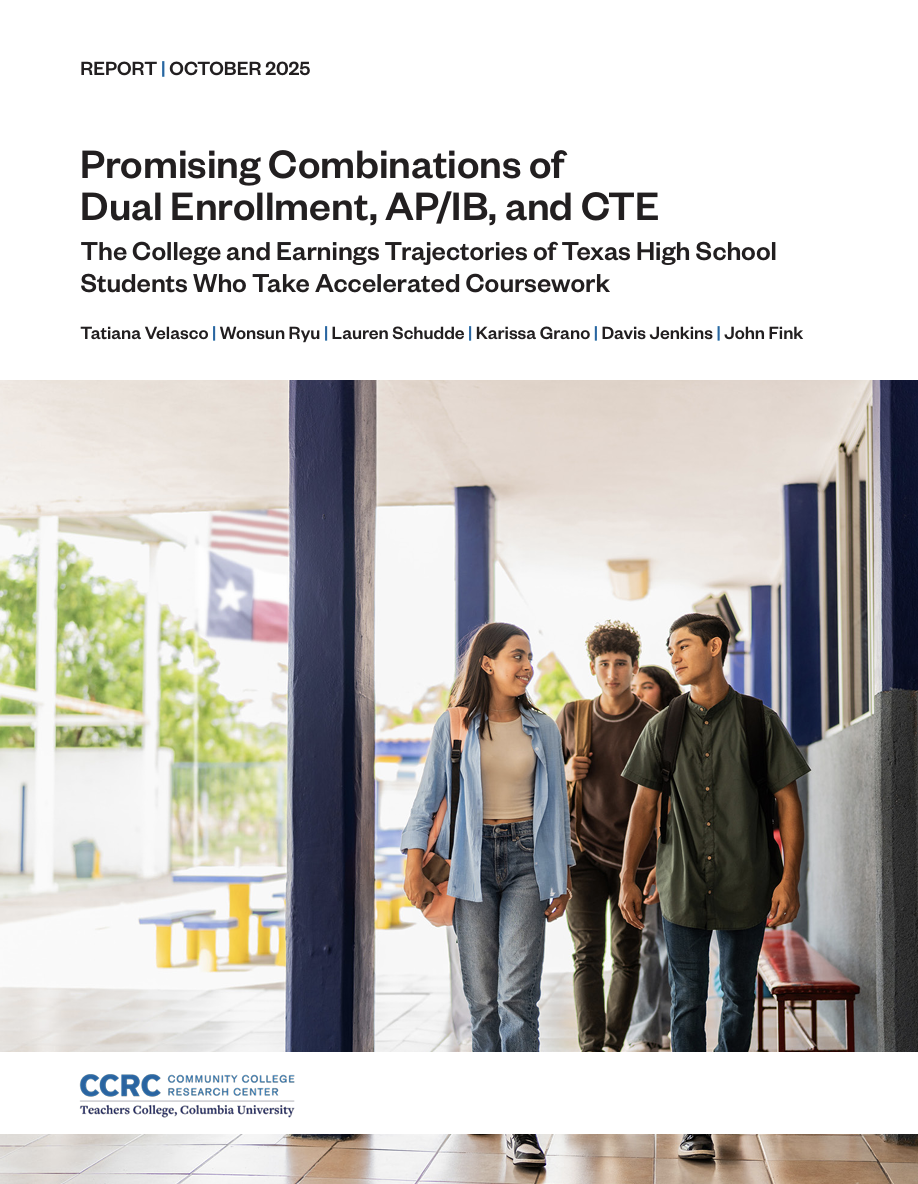
Using detailed administrative data from Texas on students who were expected to complete high school in 2015-16 and 2016-17 (complemented with data from those who were expected to complete in 2019-20 and 2022-23), this report examines how students combine dual enrollment (DE), Advanced Placement (AP) or International Baccalaureate (IB), and career-and-technical-education (CTE)-focused coursetaking in high school and how different combinations of such coursetaking relate to students’ postsecondary attainment and earnings trajectories at one, three, and six years from expected high school completion.
The authors find that students who take accelerated coursework have much stronger postsecondary and earnings outcomes in their early 20s than those who do not take any accelerated coursework. Students who combine dual enrollment and AP/IB are less diverse in terms of income and race/ethnicity, but by age 24, they have the strongest outcomes. They also find that though relatively few students combine a CTE focus (taking 10 or more high school CTE courses) with dual enrollment, those who do exhibit strong gains in their postsecondary and earnings trajectories.
By taking into account how students combine multiple types of accelerated offerings, this study provides new insights into how various accelerated coursetaking patterns may contribute to students’ educational and workforce outcomes. Findings from this analysis can help college, K-12, and state system leaders rethink how they design and support opportunities for students to take accelerated courses, with the goal of motivating and preparing them to pursue career-connected postsecondary education and training after high school.
